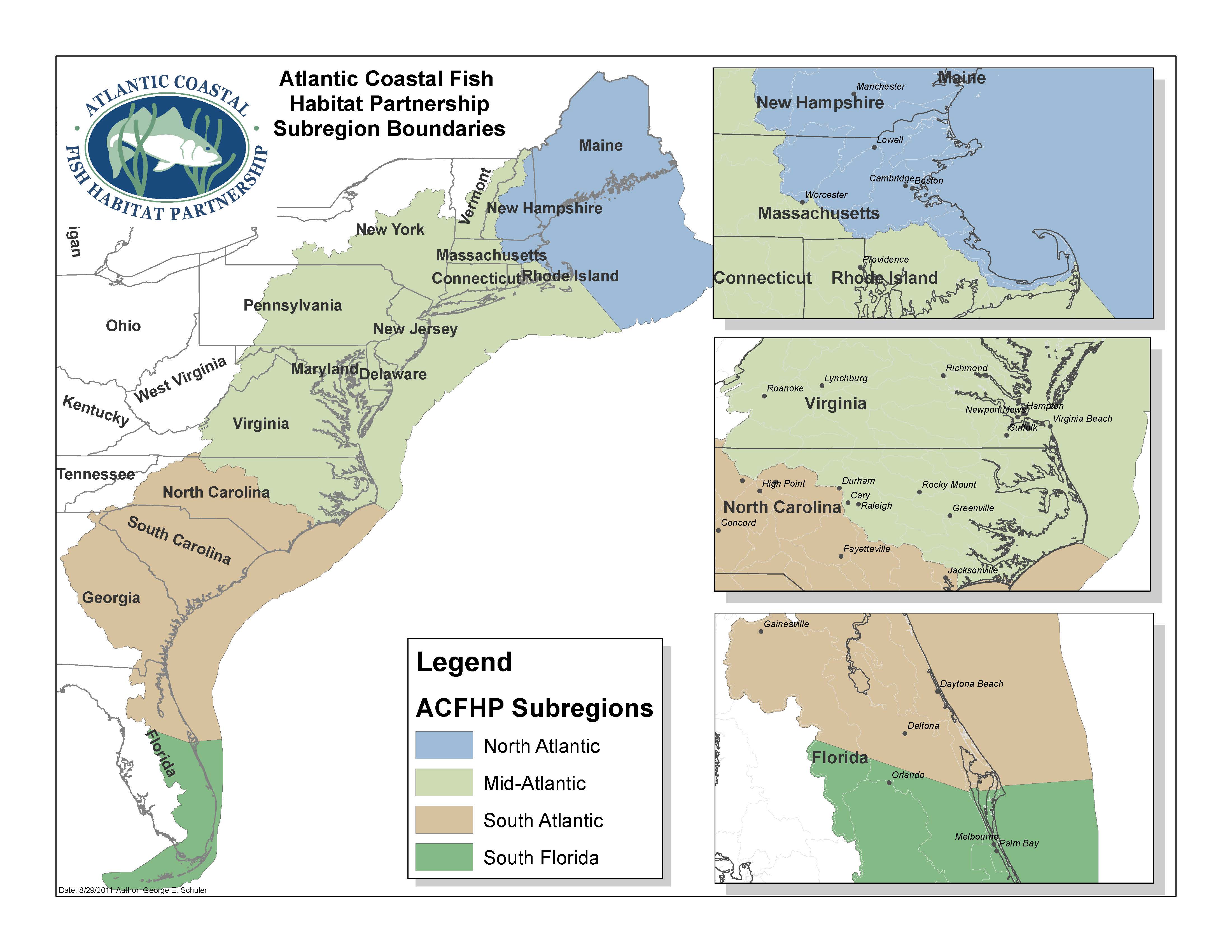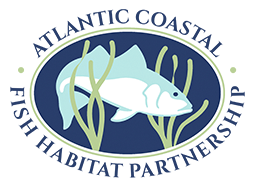Our Scope
ACFHP works in areas stretching from Maine to the Florida Keys and from the headwaters of coastally draining rivers to the edge of the continental shelf, with a focus on estuarine environments. We have broken our region down into four separate subregions for the purposes of habitat prioritization. They are the North Atlantic (the Canadian border to Cape Cod), Mid-Atlantic (Cape Cod to Cape Hatteras), South Atlantic (Cape Hatteras to Cape Canaveral), and South Florida (Cape Canaveral to the Dry Tortugas).

ACFHP Priority Habitats By Subregion
North Atlantic
- Riverine Bottom
- Submerged Aquatic Vegetation
- Marine and Estuarine Shellfish Beds
South Atlantic
- Riverine Bottom
- Submerged Aquatic Vegetation
- Marine and Estuarine Shellfish Beds
- Tidal Vegetation
Mid-Atlantic
- Riverine Bottom
- Submerged Aquatic Vegetation
- Marine and Estuarine Shellfish Beds
- Tidal Vegetation
South Florida
- Submerged Aquatic Vegetation
- Coral and Live/Hard Bottom
- Tidal Vegetation (mangrove)
The ACFHP Region Includes:
- Over 25% of the US population
- Nine of the ten most densely populated states
- The largest city in the US (New York City)
- The most urban estuary in the US (New York Harbor)
- The largest estuary in the world (Chesapeake Bay)
- The only barrier coral reef in the continental US (off of South Florida)
- The largest cruise ship port in the world (Miami, Florida)
- The only US city bordered by two National Parks (Miami: Everglades and Biscayne Bay NPs)
- Fish communities residing in climates ranging from cold temperate to tropical Atlantic
- Four National Marine Sanctuaries and one National Monument
- The largest number of diadromous species in the world
- The most marine habitat of any Fish Habitat Partnership
- One of the most rapidly warming areas in the world
- The Gulf of Maine is warming 3x faster than the global average
As you can see, ACFHP covers a densely populated region in close proximity to some of the country’s most productive and unique fish habitats. ACFHP’s role in making the connection between headwaters and the continental shelf; NGOs, state, federal, tribal, and various stakeholders; and people and fish habitat is vital to maintaining healthy fish habitat in our region.
